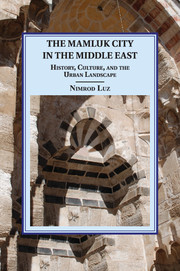In a memorial lecture for Charles Beckingham, David Morgan 1 evoked one of this prolific travel literature scholar's astuteobservations: “[T]he study of travel narratives, especially travelnarratives about a culture quite different from the traveller's own, can bevery revealing, not only about the culture he observed, but about theculture to which he belonged”. 2 This insight indeed undergirds my own approach to the descriptionsof cities by both insiders and outsiders. Narratives of cities, indeed ofany landscape, are but interpretative and hermeneutics texts which can besurely used to narrate the very landscape, but also as texts which may beused to understand the culture and perceptions of the narrator. Over thecourse of this paper, I examine two accounts (texts) of residents of Mamlūkprovincial cities in al-Shām. These texts will be placedunder the scrutiny of the data and the existing literature of those cities.In other words, the ‘conceptualised city’ as narrated by the sources will becompared with the ‘tangible city’. The latter we may unearth from variousother sources (mostly texts) as well as the city's built environment. Thus,this chapter examines the ways in which Mamlūk cities of al-Shām were scripted and narrated by two local‘storytellers’ and ‘image-makers’ of the city. 3 In this context, ‘storyteller’ is an umbrella term for those wholeft us with a narrated legacy of their city. I decided to call themstorytellers for the purpose of accentuating their inherent subjectivity.Informed and accurate as some of these narrators may have been, all of theirexperiences with and accounts of the urban landscape were guided by apersonal understanding and their own cultural background. Since each ofthese texts is about spatial practices and spatial arrangement (landscape)of the city, the argument can be made that they all fall under the headingof travel writing. 4 What is more, any narrative with a spatial dimension (Michel deCerteau would argue that there is no such thing as a narrative without one)is a story that organises space. Against this backdrop, the objective ofthis chapter, above and beyond presenting ‘spatial stories’ of cities ofSyria, is to demonstrate the complexity of the reading landscape andparticularly the ways landscape descriptions need always be taken assubjective, culture-based, culturally constructed, and a constantnegotiation between the traveller/story-teller/source narration, the‘actual’ built environment and the political context.
